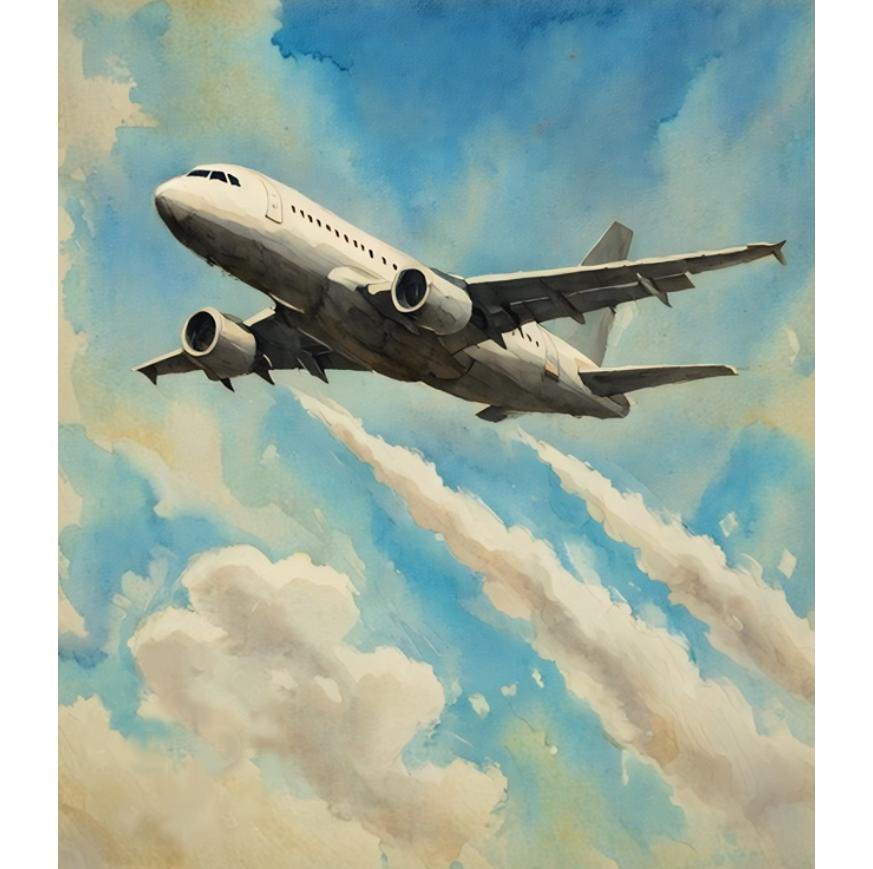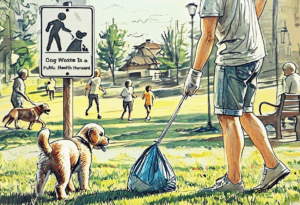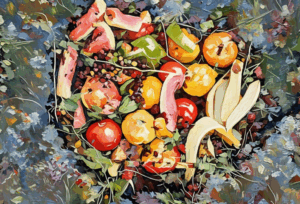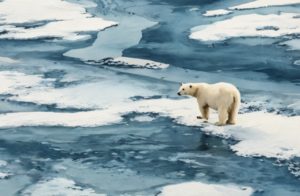
How to Spring Clean Our Spring Break Air Travel
As I get ready to head home for Spring Break—as so many other students are also gearing up to do—it made me wonder about statistics I see about voyagers during the holidays. It turns out, the expected number of travellers during the Spring Break season this year is 173 million people, according to ABC news (Ali, 2025). For reference, an average of about 2 million travellers take flight per day, according to the Federal Aviation Agency (FAA, 2024). So, how do travel fluctuations during holiday seasons impact our efforts in improving the durability of our planet? In this article, I’ll explore impacts of flights as well as alternative measures we travellers can take as we prepare to jetset either back home or to sunnier skies.
The Cost of a Flight
When purchasing an airline ticket, the cost isn’t limited to its dollar value. The environmental effects of flying leave a lasting stain on the health of our beloved planet. For example, let’s examine airline emissions. When an airplane cuts across a picturesque blue sky, the white lines trailing behind it are known as contrails. When these cloud-like lines are drawn across the sky it becomes a pseudo-cloud interrupting the otherwise blue sky. The effect of a single contrail may seem negligible, but when multiplied by the nearly 5,000 flights that are taken hourly amounting to nearly 50,000 flights daily it adds up (FAA, 2024).
Flight patterns during peak travel seasons amount to copious levels of congestion and delays. We have all seen the enormous lines at the airport that are a late traveller’s nightmare during Thanksgiving, Christmas and Spring Break. Not only that,summertime travel sees a surge of tourists visiting destinations such as Barcelona, Spain where the population increases from the local 1.4 million habitants to 14 million tourists entering through mass tourism during the summer season (Aracas, 2024). Travel plans don’t begin on the airlines though. The commute to the airport is where the journey truly begins. Airlines also advise arriving about 1.5 to 2 hours prior to departure for domestic flights and 3 hours early for international flights.During peak travel periods the surge of travellers heading to the airport can result in heavy traffic allowing more car emissions and this greenhouse gases to enter the atmosphere. The exact amount would be difficult to estimate as currently California and Illinois are the only states in the US requiring an emission test.
To compare the impact from a peak holiday season to its polar extreme I examined air quality data from during the COVID-19 pandemic. Global levels of greenhouse gases such as NO2 decreased due to the reduction of airline travel by as much as 60% (Saha, 2022). Improvements in air quality were noted globally due to citizens complying with the travel restrictions. As a student during that time, I remember trekking through my home hub and the dystopian feeling of seeing only a handful of people also permitted to travel as emergency personnel. Although eerie, it was intriguing that the measures we took for our own safety appeared to improve planetary health as well.
Fight or Flight
There are alternative tools and measures travellers can take to make sure their travel options are better for the planet. For example, using carbon emissions as a tool to filter flight options. This feature has been added to several airlines in addition to flight tracking tools that inform ticketed passengers of carbon emissions associated with flight options. You can also fly during the offseason, which can reduce air traffic congestion, minimize travel anxiety, and offer new perspectives of a city without millions of other tourists to elbow past. There are also alternative modes of transportation such as train, bus, ferry, cruise or carpooling options when feasible. I have found train rides to be particularly relaxing if I have a book I want to polish off my to-be-read list. If one feels that taking a flight is unavoidable and perhaps feels a bit of climate guilt, then there are ways to offset that impact. You could go car free for a month or not eat meat for 3 weeks.
So as the travel lists are being made and the countdown to Spring Break grows ever more enticing, keep these tips and tricks that will help us all to breathe easy in the back of your mind.
References
Ali, A., & Shapiro, E. (2025, March 6). Spring break travel forecast: What you need to know. ABC News. Retrieved March 20, 2025, from https://abcnews.go.com/US/spring-break-travel-forecast/story?id=118888614
Federal Aviation Administration. (2024, September 9). Air Traffic By The Numbers. Federal Aviation Administration. https://www.faa.gov/air_traffic/by_the_numbers#:~:text=Every%20day%2C%20FAA%20%E2%80%99s%20Air,).*%20based%20on%20FY23%20figures
Miller, A., & Jez, K. (2024, December 4). Airport Deserts: Exploring the Distance Between Airports and the Cities They Serve [Data Study]. Upgraded Points. https://upgradedpoints.com/travel/airports/airport-deserts-data-study/
Saha, L., Kumar, A., Kumar, S., Korstad, J., Srivastava, S., & Bauddh, K. (2022). The impact of the COVID-19 lockdown on global air quality: A review. Environmental sustainability (Singapore), 5(1), 5–23. https://doi.org/10.1007/s42398-021-00213-6
Sulleiro, R., & Aradas, A. (2024, October 14). ‘Not Viable’: Barcelona Turns Against Surging Tourism. Barron’s. https://www.barrons.com/news/not-viable-barcelona-turns-against-surging-tourism-7143dda6
The views and opinions expressed are those of the authors and do not necessarily reflect nor represent the Earth Chronicles and its editorial board.




